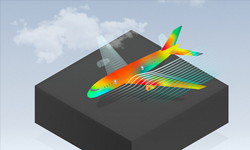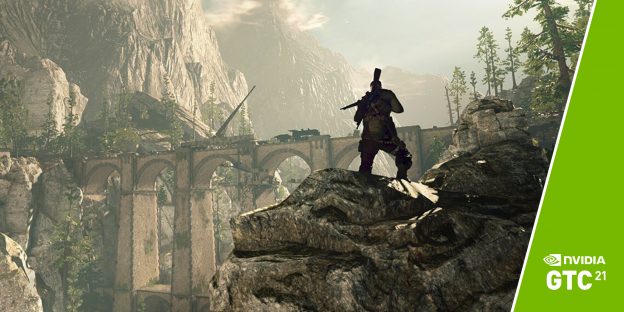 Learn from the world’s most advanced data science teams, here are some highlighted data science sessions planned for GTC.
Learn from the world’s most advanced data science teams, here are some highlighted data science sessions planned for GTC.
Join thousands of other practitioners, leaders, and innovators to learn data science from the world’s most advanced data teams.
The following are some highlighted data science sessions planned for GTC:
1. GPU-Accelerated Model Evaluation: How we took our offline evaluation process from hours to minutes with RAPIDS
In this session, we’ll describe how we utilized cuDF and Dask-CUDF to build an interactive model evaluation system that drastically reduced the time it took to evaluate our recommender systems in an offline setting. As a result, model evaluations that previously took hours to complete as CPU workloads now run in minutes, allowing us to increase our overall iteration speed and thus build better models.
Speakers:
Joseph Cauteruccio, Machine Learning Engineer, Spotify
Marc Romeyn – Machine Learning Engineer, Spotify
2. Accelerated ETL, Training and Inference of Recommender Systems on the GPU with Merlin, HugeCTR, NVTabular, and Triton
In this talk, we’ll share the Merlin framework, consisting of NVTabular for ETL, HugeCTR for training, and Triton for inference serving. Merlin accelerates recommender systems on GPU, speeding up common ETL tasks, training of models, and inference serving by ~10x over commonly used methods. Beyond providing better performance, these libraries are also designed to be easy to use and integrate with existing recommendation pipelines.
Speaker: Even Oldridge, Senior Manager, Recommender Systems Framework Team, NVIDIA
3. How Walmart improves computationally intensive business processes with NVIDIA GPU Computing
Over the last several years, Walmart has been developing and implementing a wide range of applications that require GPU computing to be computationally feasible at Walmart scale. We will present CPU vs. GPU performance comparisons on a number of real-world problems from different areas of the business and we highlight, not just the performance gains from GPU computing, but also what capabilities GPU computing has enabled that would simply not be possible on CPU-only architectures.
Speakers:
Richard Ulrich, Senior Director, Walmart
John Bowman, Director, Data Science, Walmart
4. How Cloudera Data Platform uses a single pane of glass to deploy GPU accelerated applications s across hybrid and multi-clouds
Learn how Cloudera Data Platform uses a single pane of glass to deploy GPU-accelerated applications across hybrid and multi-clouds.
Speakers:
Karthikeyan Rajendran, Product Manager, NVIDIA
Scott McClellan, General Manager of Data Science, NVIDIA
5. GPU-Accelerated, High-Performance Machine Learning Pipeline
The Adobe team is currently working with NVIDIA to build an unprecedented GPU-based, high-performance machine learning pipeline.
Speaker: Lei Zhang, Senior Machine Learning Engineer, Adobe
Visit the GTC website to register for GTC (free) and to learn more about our Data Science track.



 NVIDIA and AWS collaborated to create the Amazon Elastic Kubernetes Service (EKS), a managed Kubernetes service to scale, load balance and orchestrate workloads, now offers native support for the Multi-Instance GPU (MIG) feature offered by A100 Tensor Core GPUs, that power the Amazon EC2 P4d instances.
NVIDIA and AWS collaborated to create the Amazon Elastic Kubernetes Service (EKS), a managed Kubernetes service to scale, load balance and orchestrate workloads, now offers native support for the Multi-Instance GPU (MIG) feature offered by A100 Tensor Core GPUs, that power the Amazon EC2 P4d instances.
 This year at GTC you will join speakers and panelists considered to be the pioneers of AI who are transforming AI possibilities in government and beyond.
This year at GTC you will join speakers and panelists considered to be the pioneers of AI who are transforming AI possibilities in government and beyond.  Developers are using the latest NVIDIA RTX technology to deliver the best gaming experience to players, complete with high-quality graphics and fast performance. But improving gameplay takes more than GPU power alone.
Developers are using the latest NVIDIA RTX technology to deliver the best gaming experience to players, complete with high-quality graphics and fast performance. But improving gameplay takes more than GPU power alone.
 Learn from the world’s most advanced data science teams, here are some highlighted data science sessions planned for GTC.
Learn from the world’s most advanced data science teams, here are some highlighted data science sessions planned for GTC. Attend GTC to learn more about breakthroughs in data center and cloud networking, including optimized modern workloads and programmable data center infrastructure.
Attend GTC to learn more about breakthroughs in data center and cloud networking, including optimized modern workloads and programmable data center infrastructure.
 With more than 1,400 sessions including the latest deep learning technologies in conversational AI, recommender systems, computer vision, and video streaming, here is a preview of some of the top AI/DL sessions.
With more than 1,400 sessions including the latest deep learning technologies in conversational AI, recommender systems, computer vision, and video streaming, here is a preview of some of the top AI/DL sessions. In this tutorial, we take a look at using Alluxio Data Orchestration across multiple stages of a data processing pipeline, from ETL to analytics and AI/ML.
In this tutorial, we take a look at using Alluxio Data Orchestration across multiple stages of a data processing pipeline, from ETL to analytics and AI/ML.